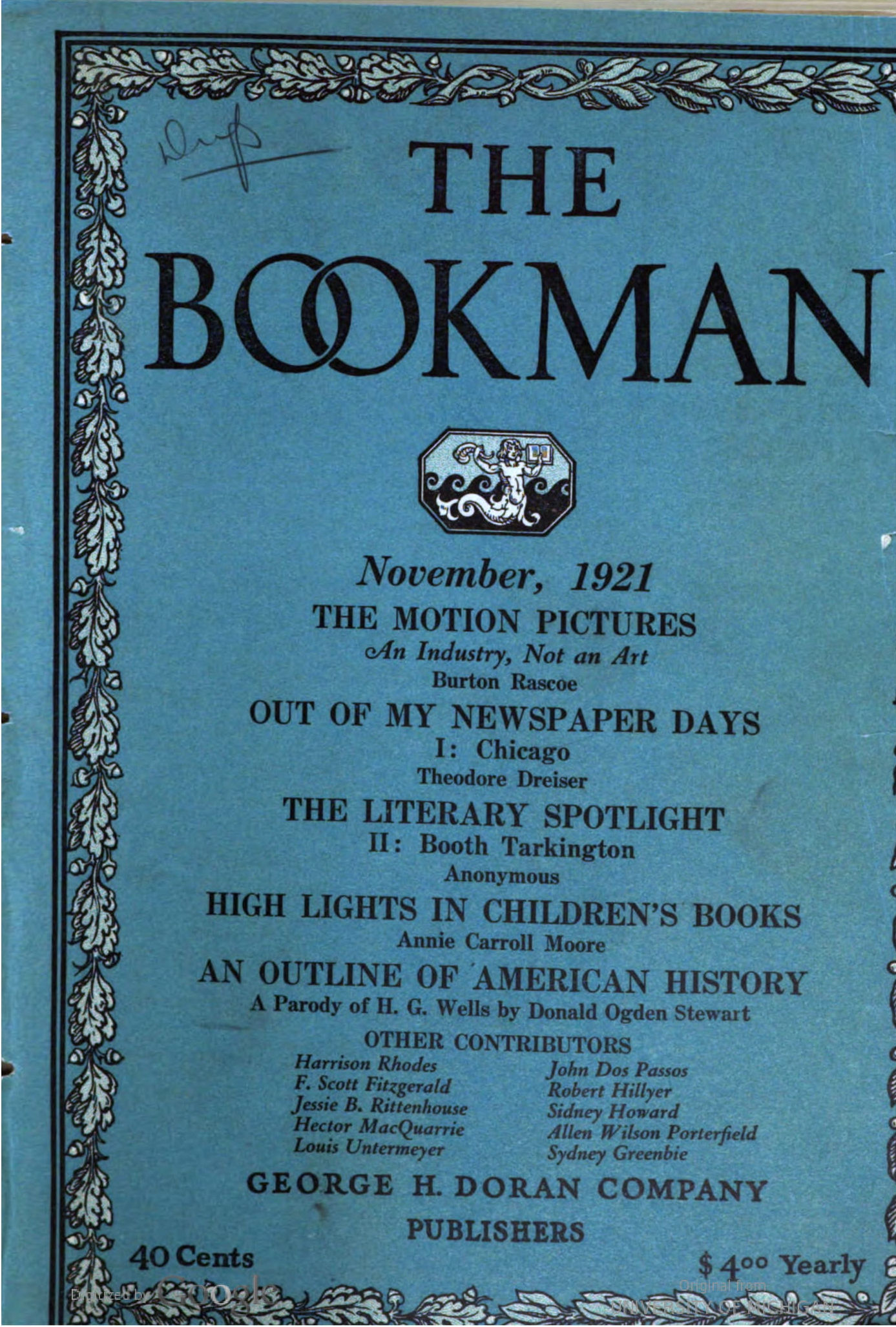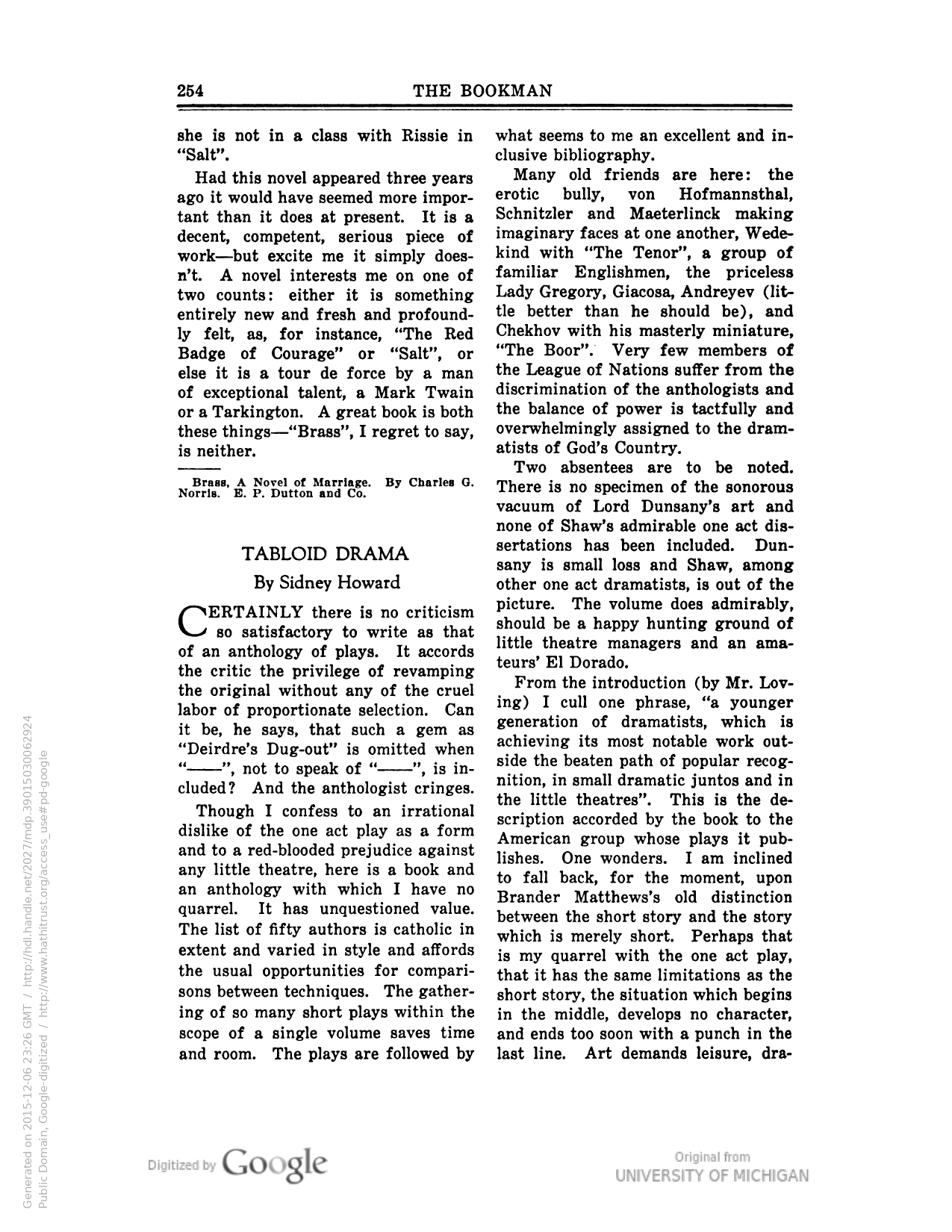
Poor Old Marriage
by F. Scott Fitzgerald
Although not one of the first I was certainly one of the most enthusiastic readers of Charles Norris’s Salt—I sat up until five in the morning to finish it, stung into alertness by the booming repetition of his title phrase at the beginning of each section. In the dawn I wrote him an excited letter of praise. To me it was utterly new. I had never read Zola1 or Frank Norris or Dreiser—in fact the realism which now walks Fifth Avenue was then hiding dismally in Tenth Street basements.2 No one of my English professors in college ever suggested to his class that books were being written in America. Poor souls, they were as ignorant as I—possibly more so. But since then Brigadier General Mencken has marshaled the critics in acquiescent column of squads for the campaign against Philistia.
In the glow of this crusade I read Brass and suffered a distinct disappointment. Although it is a more difficult form than Salt and is just as well, perhaps more gracefully, constructed, the parallel marriages are by no means so deftly handled as the ones in Arnold Bennett’s Whom God Hath Joined.3 It is a cold book throughout and it left me unmoved. Mr. Norris has an inexhaustible theme and he elaborates on it intelligently and painstakingly— but, it seems to me, without passion and without pain. There is not a line in it that compares with Griffith Adams’s4 broken cry of emotion, “Why, I love you my girl, better than any other God damned person in the world!”
There was a fine delicacy in Frank Norris’s work which does not exist in his brother’s. Frank Norris had his realistic tricks—in McTeague, for instance, where the pictures are almost invariably given authenticity by an appeal to the sense of smell or of hearing rather than by the commoner form of word painting—but he seldom strengthens his dose from smelling salts to emetics. Brass, on the contrary, becomes at times merely the shocker— the harrowing description of Leila’s feet could only be redeemed by a little humor, of which none is forthcoming. Early in the book one finds the following sentence: “He inflated his chest… pounding with shut fists the hard surface of his breast, alternately digging his finger-tips into the firm flesh about the nipples.”
Here he has missed his mark entirely. I gather from the context that he has intended to express the tremendous virility of his hero in the early morning. Not questioning the accuracy of the details in themselves, it is none the less obvious that he has chosen entirely the wrong details. He has given a glimpse not into Philip’s virility but into the Bronx zoo.
Save for the pseudo-Shavian5 discussion on marriage near the end Mr. Norris manages to avoid propaganda and panacea. Some of the scenes are excellent—Philip’s first courtship, his reunion with Marjorie after their first separation, his final meeting with her. Marjorie and Philip’s mother are the best characters in the book, despite the care wasted on Mrs. Grotenberg. Leila is too much a series of tricks—she is not in a class with Rissie in Salt.
Had this novel appeared three years ago it would have seemed more important than it does at present. It is a decent, competent, serious piece of work—but excite me it simply doesn’t. A novel interests me on one of two counts: either it is something entirely new and fresh and profoundly felt, as, for instance, The Red Badge of Courage or Salt, or else it is a tour de force by a man of exceptional talent, a Mark Twain or a Tarkington. A great book is both these things—Brass, I regret to say, is neither.
Brass, A Novel of Marriage. By Charles G. Norris. E. P. Dutton and Co.
Notes
1. Emile Zola (1840-1902), French novelist who founded the Naturalist literary movement.
2. Many of New York’s most expensive shops are located on Fifth Avenue; Tenth Street crosses Greenwich Village, the bohemian section of Manhattan.
3. 1906 novel by English fiction writer Arnold Bennett (1867-1931).
4. The hero of Norris’s Salt.
5. Reference to Irish dramatist George Bernard Shaw, whose plays contained sometimes long-winded discussions of marriage.
Published in The Bookman magazine (November 1921).
Not illustrated.


